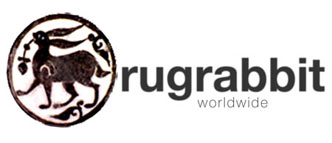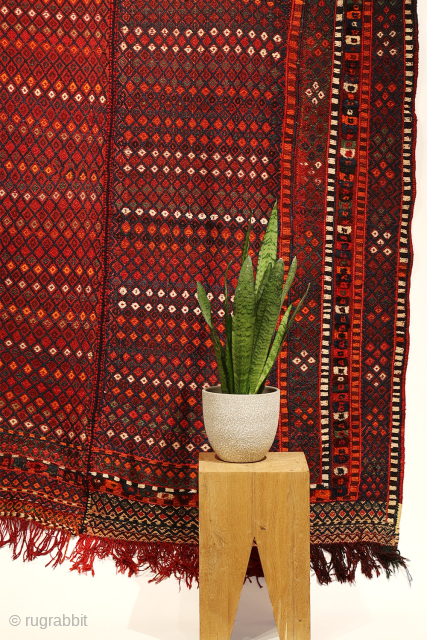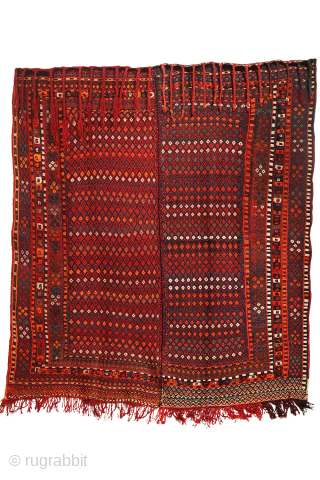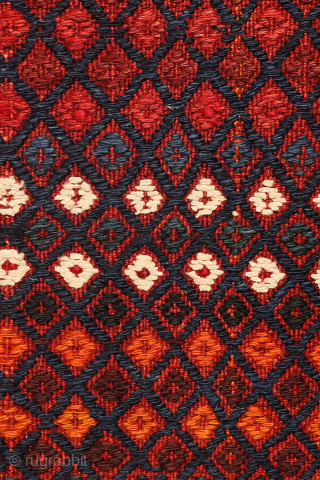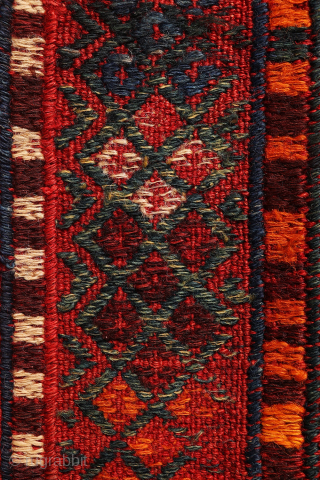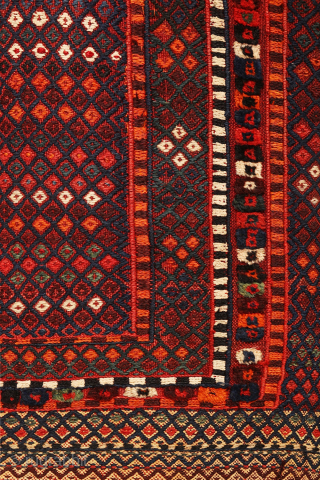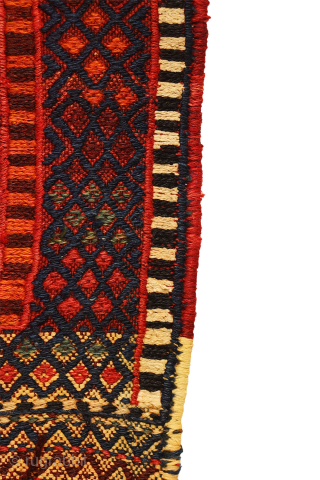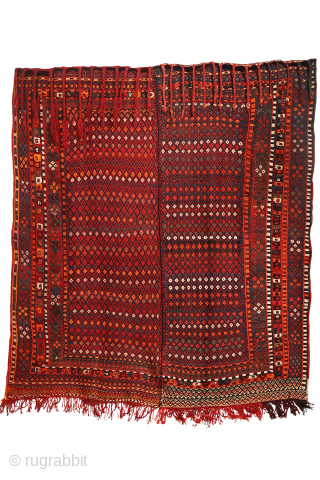Back
Shiraki Kilim with Lattice Design and Knotted Detail
This type of kilim is known locally in southern Iran as a “shiraki”, a word that literally means “needle work” — though, interestingly, it is woven on a loom rather than sewn. Due to the limited size of the looms available to most weavers, shiraki kilims were traditionally woven in two separate panels and then meticulously joined to achieve the desired width, a nearly square kilim. In this particular piece, the two halves exhibit very distinct personalities.
This shiraki kilim features a traditional lattice or grid pattern in the main field—a classic design that has been thoughtfully echoed in two of the main borders. As a unique and original touch, the weaver introduced small knotted squares within the central border, diverging from the flat-weave technique used throughout the rest of the kilim.
Material: 100% hand-spun sheep wool
Size: 184×179 cms
Origin: Arab tribe from Iran
Date of weaving: 1950’s
You can buy this Shiraki kilim directly from our web: https://www.nomada.biz/en/producto/semi-antique-arab-shiraki-kilim-from-...
- Home
- Antique Rugs by Region
- Category
- Profiles
- Post Items Free
- Albums
- Benaki Museum of Islamic Art
- Budapest: Ottoman Carpets
- Gulbenkian Museum
- Islamic Carpets. Brooklyn
- Islamic Textiles. Brooklyn
- Konya Museum: Rugs
- MKG, Hamburg
- MMA: Caucasian Carpets
- MMA: Mamluk Carpets
- MMA: Mughal Indian Carpets
- MMA: Ottoman Carpets
- MMA: Safavid Persian Carpets
- MMA: Turkmen Rugs
- McCoy Jones Kilims
- Ottoman textiles. Met
- Philadelphia Museum
- Rugs and Carpets: Berlin
- Seljuqs at the Met
- TIEM, Istanbul: Carpets
- V&A: Classical Carpets
- Vakiflar Carpets: Istanbul
- Baluch Rugs: Indianapolis
- Gallery Exhibitions
- Jaf an Exhibition
- Alberto Levi Gallery
- Andean Textile
- Christie's London: 2016
- Francesca Galloway
- HALI at 40
- ICOC Washington, DC 2018
- Jajims of the Shahsavan
- London Islamic Week April, 2018
- Mongolian Felts
- Navajo Rugs: JB Moore
- Persian Piled Weavings
- SF Tribal & Textile Art Show 2020
- SF Tribal 2019
- Sotheby's: C. Alexander
- Turkish Prayer Rugs
- Turkmen Main Carpets ICOC 2007
